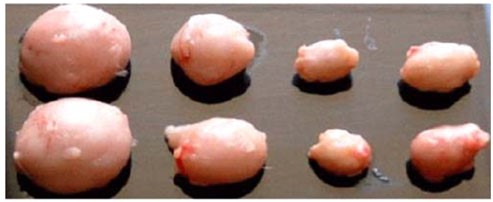Effective Infectious Bursal Disease protection vital cog in keeping flocks healthy
This article first appeared in the Poultry Health supplement to August’s issue of Poultry Business magazine
One of the key factors in keeping birds free from disease is protecting them from infectious bursal disease virus (IBDV – a virus that is a very resistant and widespread and can have significant economic impact).
The IBD virus primarily attacks the bursa of Fabricius, a key immune organ in the bird. Infection with this virus leads to immunosuppression, leaving the birds vulnerable to other viral and bacterial infections. This causes increased mortality and sub-standard performance of flocks – fairly general signs which can easily be caused by multiple other pathogens or issues.
All chickens are susceptible and need to be vaccinated against IBDV.
“Where producers can go wrong in protecting their birds is judging the timing of vaccination,” says John Kenyon, Zoetis veterinary manager. “When problems do occur, they tend to be costly to control. Anything that impacts broiler performance will have consequences on profitability.
“A key area is to ensure the timing is correct, yet this can be difficult to assess. Young chicks receive some IBD immunity from the vaccinated parent stock through maternally derived antibodies (MDA) but they will also stop the vaccine strains. However, MDA levels start to gradually wane over time, so live attenuated vaccines are used to protect against field infections.
“Vaccination needs to be timed to occur after the MDA levels have waned to a level that the vaccine will be able to have a good ‘take’ – but critically also before field viruses present in the environment have been able to infect the birds. This is called the ‘vaccination window’ when timing is the key to success.”
Monitoring MDA levels in day-old chicks can help to inform appropriate vaccination timing, as well as routine testing of older birds to investigate whether any significant IBDV field challenges such as very virulent strains of Gumboro (vvIBDV) are present.
The choice of vaccine strain is important. If there is a low level of field challenge, at certain times you may decide to drop from intermediate plus to intermediate vaccine.
“MDA breakthrough potential is very important to consider when choosing an appropriate IDBV vaccine. Other factors to consider include whether the vaccine virus is of chick embryo origin or tissue culture origin, which may affect how rapidly the vaccine virus will replicate. Also, some vaccines are ‘non-cloned’ vaccines, which means that a more diverse range of subpopulations is maintained which may broaden protection against the variety of field populations that may be encountered,” says Kenyon.
Zoetis has two IBDV vaccines licensed in the UK, Poulvac Bursine 2 and Poulvac Bursa Plus. Both are non-cloned and Chick Embryo Origin. The intermediate vaccine Poulvac Bursine 2 provides reliable, consistent MDA breakthrough performance and is used for broilers, layer pullets and breeding stock. It is derived from the Lukert strain virus which has key genetic similarities to many UK field strains for dependable protection. Poulvac Bursa Plus is an intermediate plus IBDV vaccine for broilers which has been shown to have excellent MDA breakthrough potential whilst limiting any pathogenic effects on the developing bursa of the birds.
Newer technology vaccines already exist such as HVT-IBD vector vaccines and immune complex vaccines, which can often be given in ovo or at day of age. Due to the specialist equipment that in ovo vaccination requires, these vaccines are most commonly used in higher value breeding stock currently, however as the poultry industry continues to evolve, we may start to see more use of these types of vaccines across more areas of the UK poultry industry.


